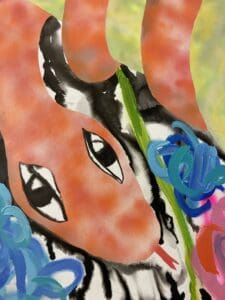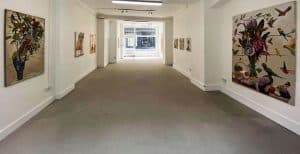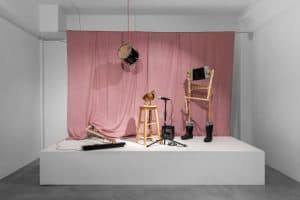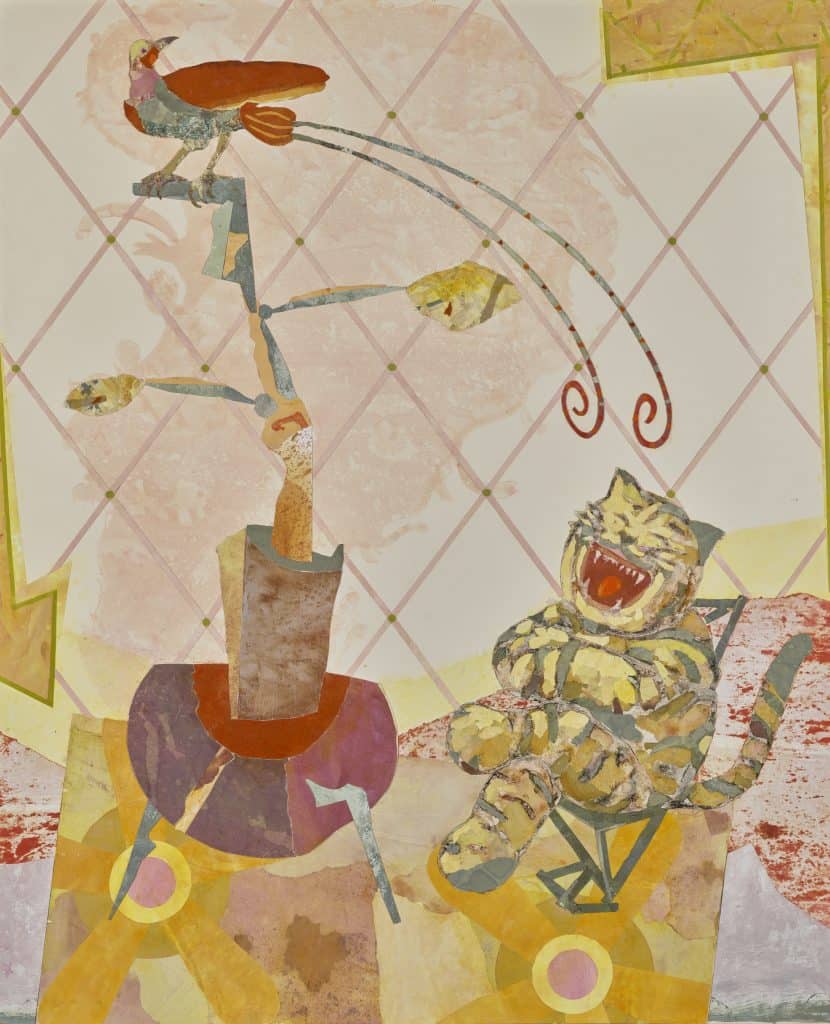
43 by 35 in © Bazil Duliskovich Courtesy the artist and gallery
David Kovats Gallery has opened his second summer exhibition dedicated to the Ukrainian artist Bazil Duliskovich at the gallery’s main location, 80 Long Acre in Covent Garden.
Bazil has experimented with video art, collage and sculpture, but his principal means of expression is painting, a medium through which he challenges the Soviet art education he encountered growing up on the Ukrainian side of the border with Hungary. Another source of Bazil’s defiance is the ill-defined and stereotyping labels often applied to his work. Characterisations such as ‘Eastern European’, ‘Slavic’ or ‘post-Soviet art’ are a source of frustration to the artist, who grew up speaking multiple languages in a region endowed with numerous cultures and identities.
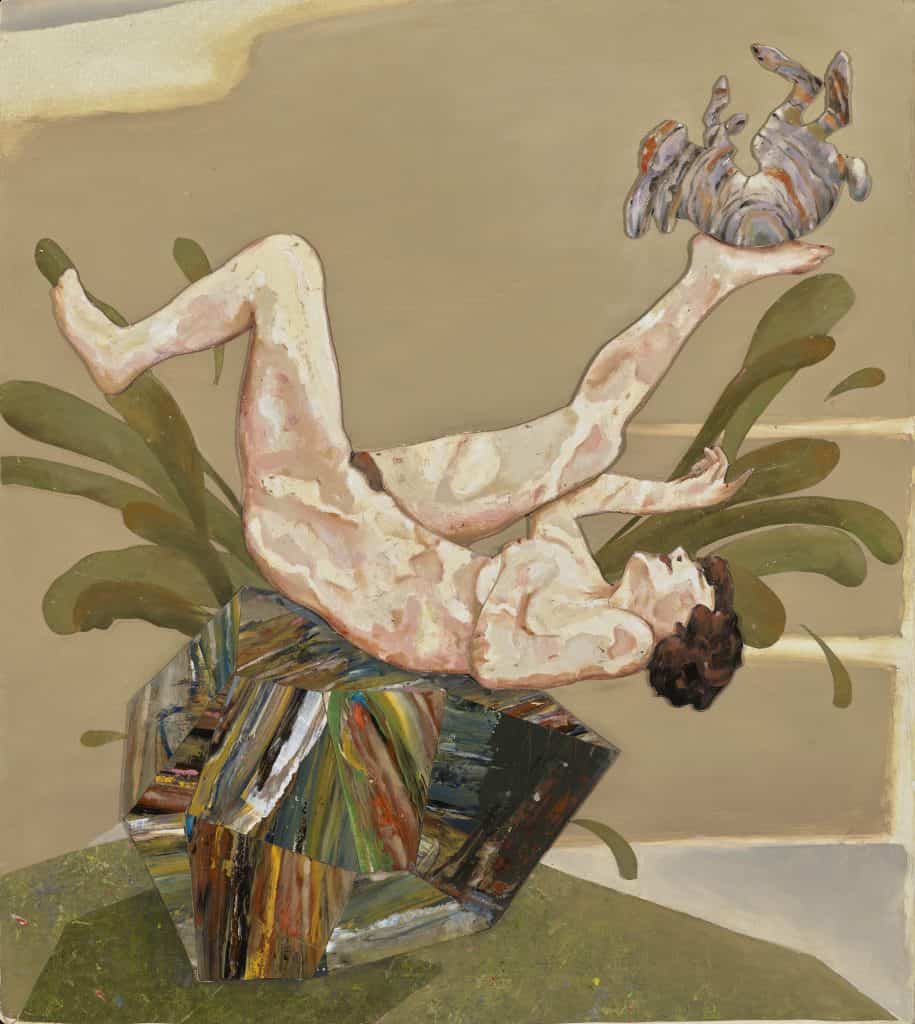
The artist likes to experiment with the distortion of reality, often depicting individuals in imaginary situations in a faux-documentary-like visual style. In Bazil’s experience, viewers interpret his paintings differently from the way he sees them, frequently pointing out a sense of loneliness suffusing the work. He rarely begins with a set plan in mind, and does not set out to capture a mood of isolation — nor is he comfortable providing ideological interpretations. But it is true that he prefers complete solitude in the studio, his own autonomous space.

79 in by 59 in © Bazil Duliskovich Courtesy the artist and gallery
For this exhibition, the artist and the gallery bring together 14 of his latest works, with themes ranging from human and ethereal figures to flowers and utopian landscapes. Subjects are depicted using a unique method, similar to collages. This involves painting and cutting up several sheets of paper into little pieces, which are then mounted together forming objects and figures, creating multiple shades, and colorisations, similar to if someone was using pieces of bark to construct a tree. These tightly composed and complex works are, in their draughtsmanship, a product of the formal training Bazil holds, yet there is a conscious departure from the Old Masters and Socialist realism of the academy, even if stylistic traces remain. At first glance his figures can appear realistic — even photorealistic — but soon dissolve into a dream-like, cinematic visual world.
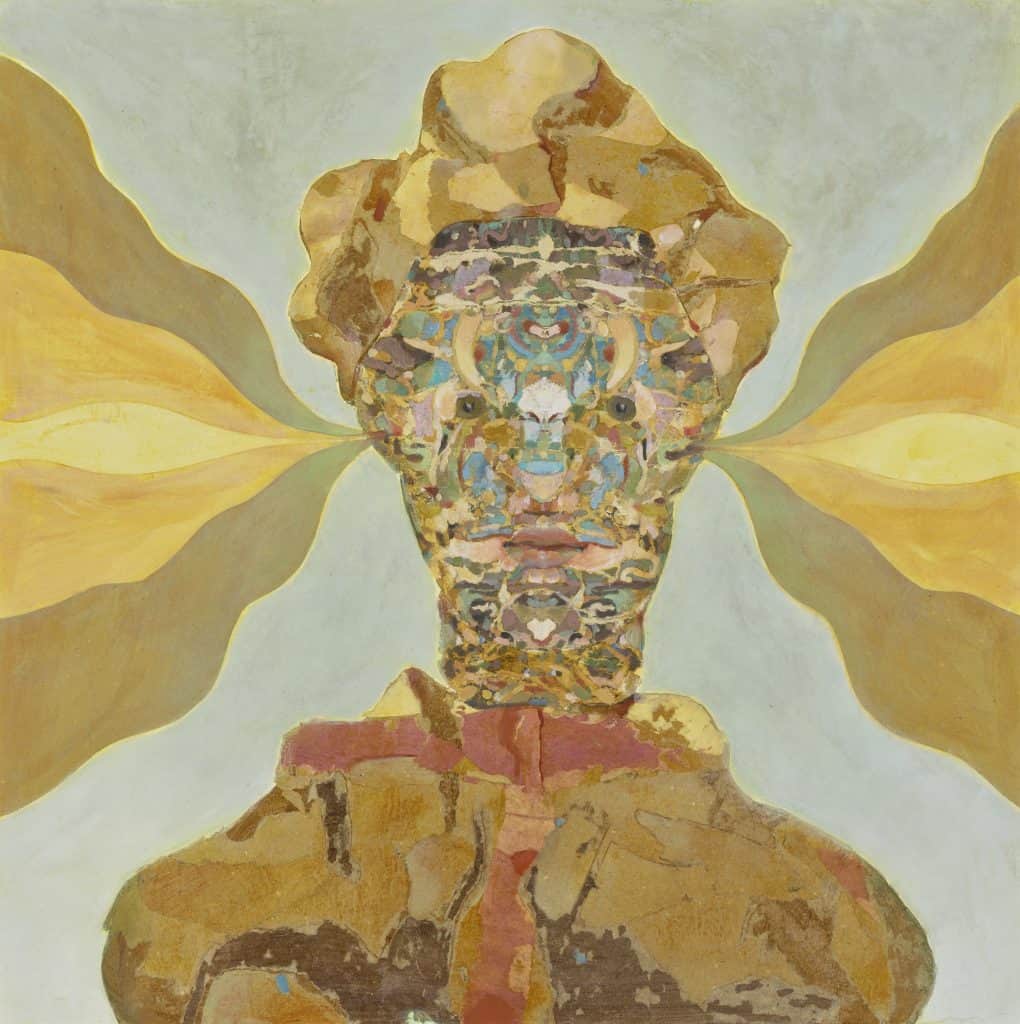
60 × 59 cm 24 by 23 © Bazil Duliskovich Courtesy the artist and gallery
For Bazil, his art is a means of communication, of expression and reflection too. ‘If I could put the message of my art into words then I wouldn’t be painting,’ says the Hungarian artist Bazil Duliskovich. ‘I’d just say it — but I can’t, because I don’t think it’s possible to express my artistic purpose with words.’
This exhibition is the second out of the three summer solo exhibitions presented at the gallery space, highlighting the work of emerging and established Hungarian artists such as Gábor Király and István Nyári, introducing their work to London’s arts scene for the first time.
Bazil Duliskovich – 6th July at David Kovats Gallery davidkovats.com

Bazil Duliskovich I’m Not a Nude oil, mixed media on canvas mounted on styrofoam signed, titled and dated 2021 on the reverse
105 × 77 cm 41 by 30 in © Bazil Duliskovich Courtesy the artist and gallery
About the Artist
Bazil Duliskovich (b. 1969) was born and raised in the Soviet Ukraine. To his great annoyance, his work is often forcefully labelled as ‘Eastern European’, ‘Slavic’ or ‘Post-Soviet’ art, arguably stereotypical and poorly defined terms. Growing up near the Hungarian-Ukrainian border in the Soviet era, he has experienced just how vastly different Eastern European cultures are, and communicating with people in 3-4 different languages was second nature to him. Throughout his career, Bazil has made a conscious effort to challenge the ideas instilled into him by the rigorous system of Soviet art education and break away from the traditional academic approach to painting.
As a graduate from The Hungarian University of Fine Arts, the rigorous training he received in academic drawing serves him well at the same time: Bazil is able to draw up complex compositions that place realistic individuals into surreal and dream-like positions with ease.
Although he can take weeks or months to finish a canvas, Bazil has also experimented with rapid art-making: in the series Daily Routine, he completed a painting a day, building a coherent body of work — a diary that couldn’t be put into words. Bazil lives and works in Budapest, Hungary.

